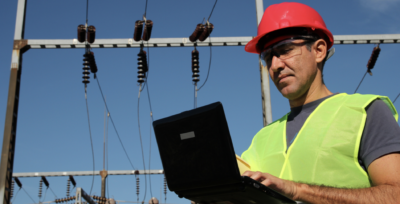Electric cooperatives play a pivotal role in delivering reliable broadband connectivity across rural and semi-urban areas. Yet, many of these organizations face stringent budget constraints, hindering their ability to expand and maintain fiber networks effectively. Achieving budget efficiency is not only a financial necessity but also a strategic imperative that directly impacts service delivery, public safety, and community growth. A survey by the National Rural Electric Cooperative Association reveals that 68% of cooperatives cite budget constraints as a major challenge in expanding broadband access. Developing budget-friendly solutions is essential for maintaining robust networks while making the most of limited resources.

Cost Savings Through Strategic Investment and Evaluation
The first step toward achieving budget efficiency is a thorough evaluation of existing network assets. Electric cooperatives must routinely assess the condition and performance of their fiber networks to identify inefficiencies and redundant components. By doing so, co-ops can strategically invest in targeted upgrades rather than undertaking costly, broad-scale overhauls. Learning to evaluate the total cost of ownership is critical. This approach entails not only considering initial capital expenditures but also examining ongoing operational costs, ensuring that investments deliver long-term cost savings.
A strategic investment in next-generation fiber networks may have a higher upfront cost; however, when executed effectively, these investments yield significant savings over time by reducing emergency repairs and cutting downtime. Renegotiating vendor contracts, standardizing maintenance procedures, and adopting digital asset management practices can further optimize resource allocation. Ultimately, the goal is to achieve cost savings that free up limited resources for further network improvements, paving the way for more sustainable broadband expansion.
Enhancing Operational Efficiency with Proactive Management
High operational costs have long been a challenge for electric cooperatives, particularly when manual processes and fragmented data dominate daily network management. Transitioning to a proactive approach can significantly boost operational efficiency. When networks are managed reactively, issues are only addressed after they cause service disruptions or costly emergency fixes. In contrast, a proactive, data-driven strategy enables early identification of potential problems, ensuring that maintenance is scheduled and executed before issues escalate.
Digital tools play an instrumental role in this transformation. GEOGRAPH’s CrescentLink enables electric cooperatives to streamline workflows by automating routine monitoring and asset tracking. Through real-time, interactive mapping, CrescentLink consolidates network data into a central, unified view. This provides network managers with the immediate insights needed to make informed decisions, optimize maintenance schedules, and allocate resources more efficiently. Enhanced operational efficiency leads to both immediate cost savings and long-term network reliability, directly contributing to improved budget efficiency.
Digital transformation and automation not only reduce manual labor and incident response time but also help co-ops to mitigate funding challenges. In today’s rapidly evolving technology landscape, shifting from reactive to proactive network management can result in enhanced performance while simultaneously cutting operational costs, an essential move for electric cooperatives operating under tight budgets.

Leveraging CrescentLink for Integrated Network Management
A key element in achieving both cost savings and operational efficiency is leveraging sophisticated digital tools. GEOGRAPH’s CrescentLink provides comprehensive asset management by delivering interactive mapping capabilities that give a real-time snapshot of the network’s health and performance. This solution allows cooperative leaders to pinpoint network bottlenecks and assess the condition of aging fiber assets more accurately.
Integrating CrescentLink into municipal network operations enables electric co-ops to streamline maintenance and strategically plan upgrades. With a centralized view of network data, cooperatives can identify which areas need immediate attention and which upgrades will deliver the most long-term benefit. This data-driven asset management strategy is fundamental in ensuring that every dollar spent on network improvements contributes to enhanced service reliability and reduced operational costs.
By embracing digital tools like CrescentLink, electric cooperatives can also foster a proactive culture that values continuous improvement. The real-time insights provided by such platforms allow for prompt adjustments and efficient resource utilization, ensuring that budget constraints do not impede the delivery of high-quality broadband services. Ultimately, digital integration through CrescentLink ensures that electric co-ops are better positioned to overcome funding challenges and remain competitive in a challenging economic environment.
Charting the Future of Budget Efficiency
Achieving budget efficiency is a multifaceted challenge that requires strategic planning, smart investments, and the integration of advanced technology. For electric cooperatives, the path to transforming aging fiber networks is paved with proactive measures that improve operational efficiency and drive cost savings. By conducting thorough asset assessments, streamlining workflows, and leveraging digital tools like GEOGRAPH’s CrescentLink, cooperatives can optimize their network management practices, reduce unnecessary expenses, and ensure sustainable broadband service delivery.
In an era where expanding broadband access is crucial for economic development and community growth, addressing budget constraints must be a top priority. For electric cooperatives, effective infrastructure management enables them to maximize every investment while laying the groundwork for future-proof, resilient networks. A commitment to budget efficiency not only supports current operational needs but also paves the way for a connected, efficient future, one where communities benefit from reliable, high-speed broadband access.




